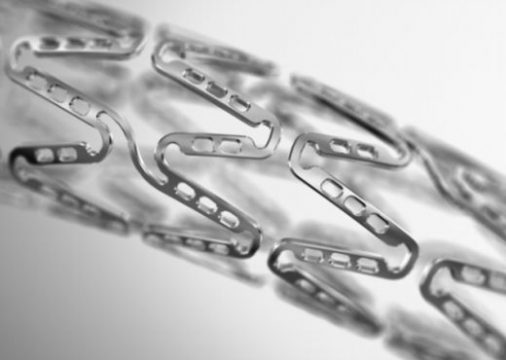This study sought to randomly compare the double-layer Roadsaver stent (Terumo) with the single-layer Carotid Wallstent device (Boston) in association with either distal filter-like embolic protection device FilterWire (Boston) or proximal protection device Mo.Ma (Medtronic) in patients with lipid-rich carotid plaques.

This is a very interesting work because there are no head-to-head simultaneous comparisons between these stent types and these brain protection systems: we only had physiopathological speculation.
A total of 104 consecutive patients were randomized to carotid artery stenting with FilterWire + Roadsaver stent (group 1, n = 27), FilterWire + Wallstent (group 2, n = 25), Mo.Ma + Roadsaver stent (group 3, n = 27), or Mo.Ma + Wallstent (group 4, n = 25).
The primary endpoint was the number of microembolic signals on transcranial Doppler in each procedural step: target vessel access; lesion wiring; pre-dilation; stent crossing; stent deployment; post-dilation, and device retrieval.
Read also: Crest-2 Registry: Carotid PCI Presents Low Rates of Death and Stroke.
The Mo.Ma was significantly superior to the FilterWire device in the reduction of microembolic signals (p < 0.0001) during lesion crossing, stent crossing, stent deployment, and post-dilation.
The Roadsaver was significantly superior to the Wallstent device (p = 0.016) during stent deployment and device retrieval. It also reduced the number of spontaneous microembolic signals (29% of patients).
The combination of proximal protection device Mo.Ma and double-layer stent Roadsaver was superior (p = 0.043) to all other combinations.
Read also: New Device for More Protection in Carotid Artery Stenting.
These were the differences found regarding microembolic signals on transcranial Doppler, but there were no clinical differences.
After stenting, peak systolic velocity decreased in all patients. At 6 months, only one patient experienced restenosis.
Conclusion
In patients with high-risk, lipid-rich carotid plaque, angioplasty combining proximal protection device Mo.Ma and double-layer stent Roadsaver resulted in the lowest number of microembolic signals on transcranial Doppler.
Original title: Carotid Wallstent Versus Roadsaver Stent and Distal Versus Proximal Protection on Cerebral Microembolization During Carotid Artery Stenting.
Reference: Piero Montorsi et al. J Am Coll Cardiol Intv 2020;13:403–14.
Subscribe to our weekly newsletter
Get the latest scientific articles on interventional cardiology
We are interested in your opinion. Please, leave your comments, thoughts, questions, etc., below. They will be most welcome.




